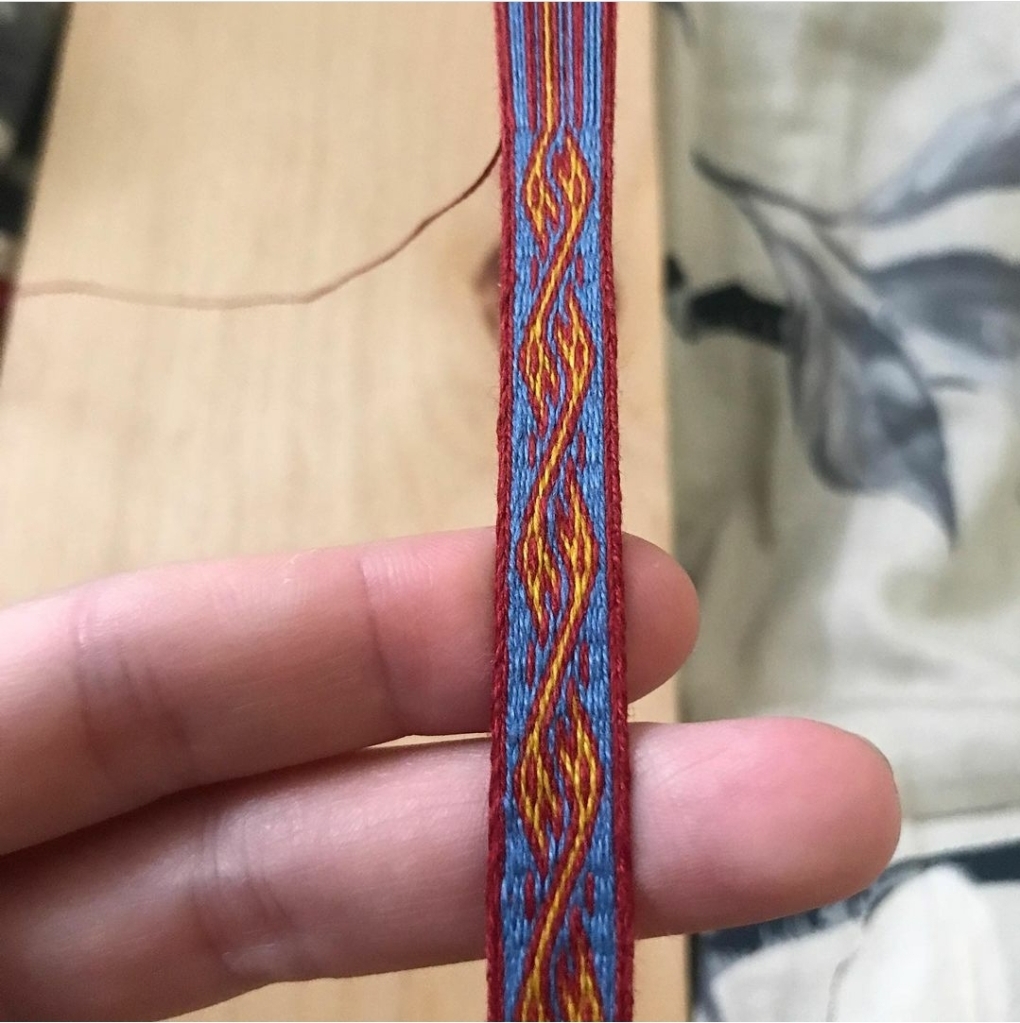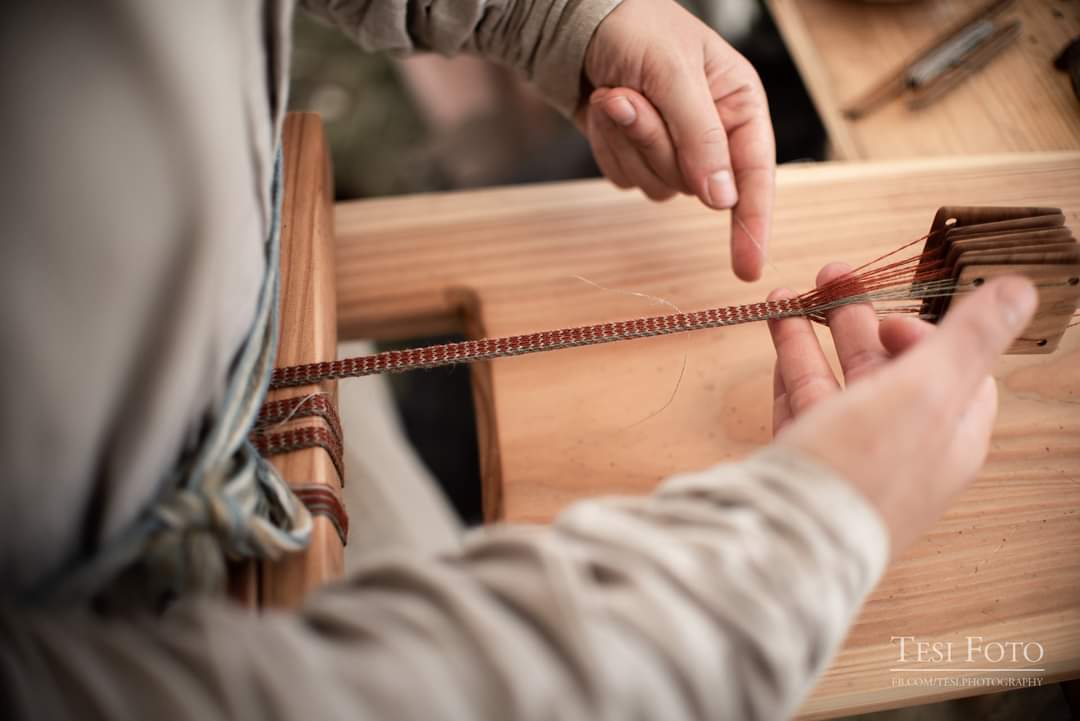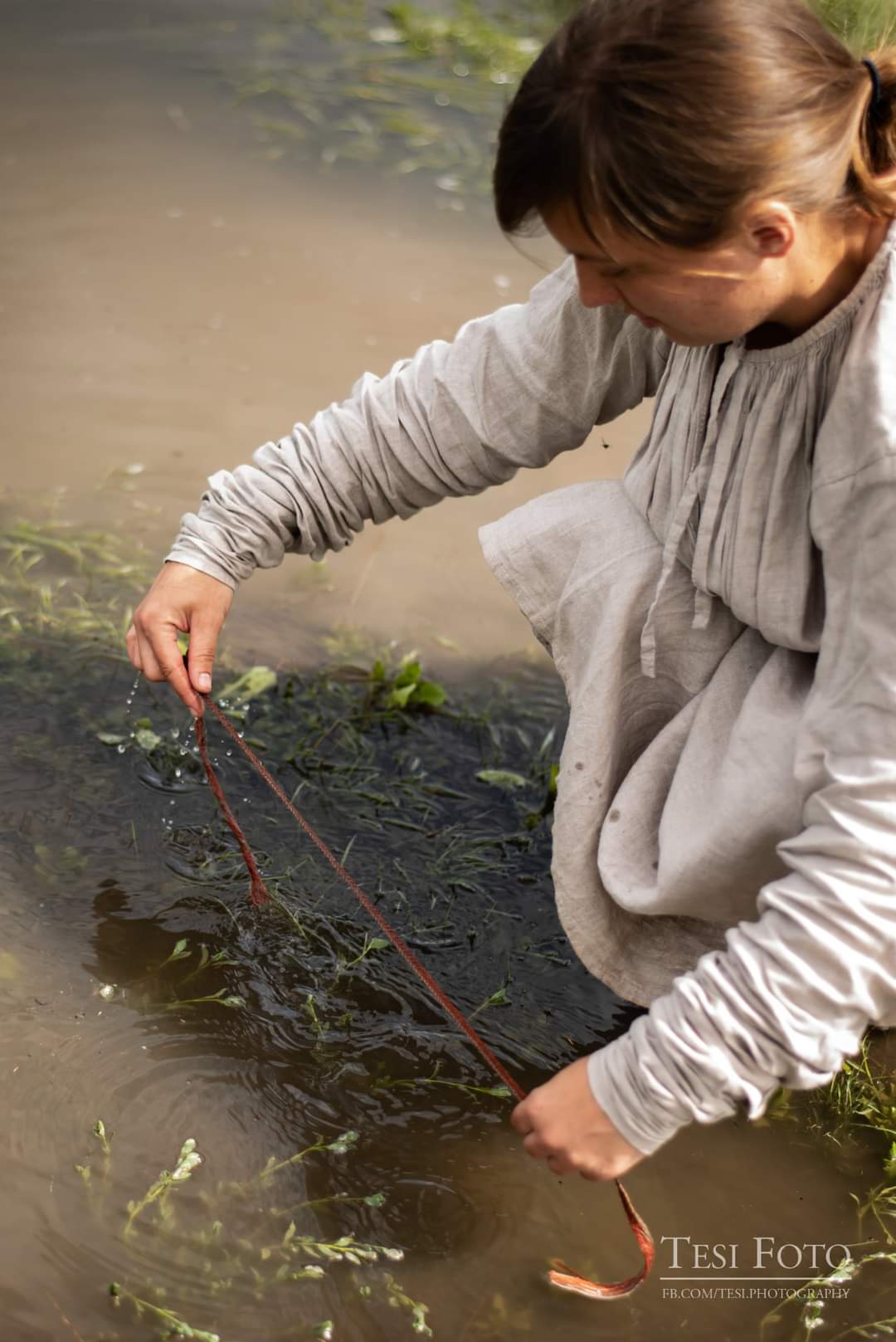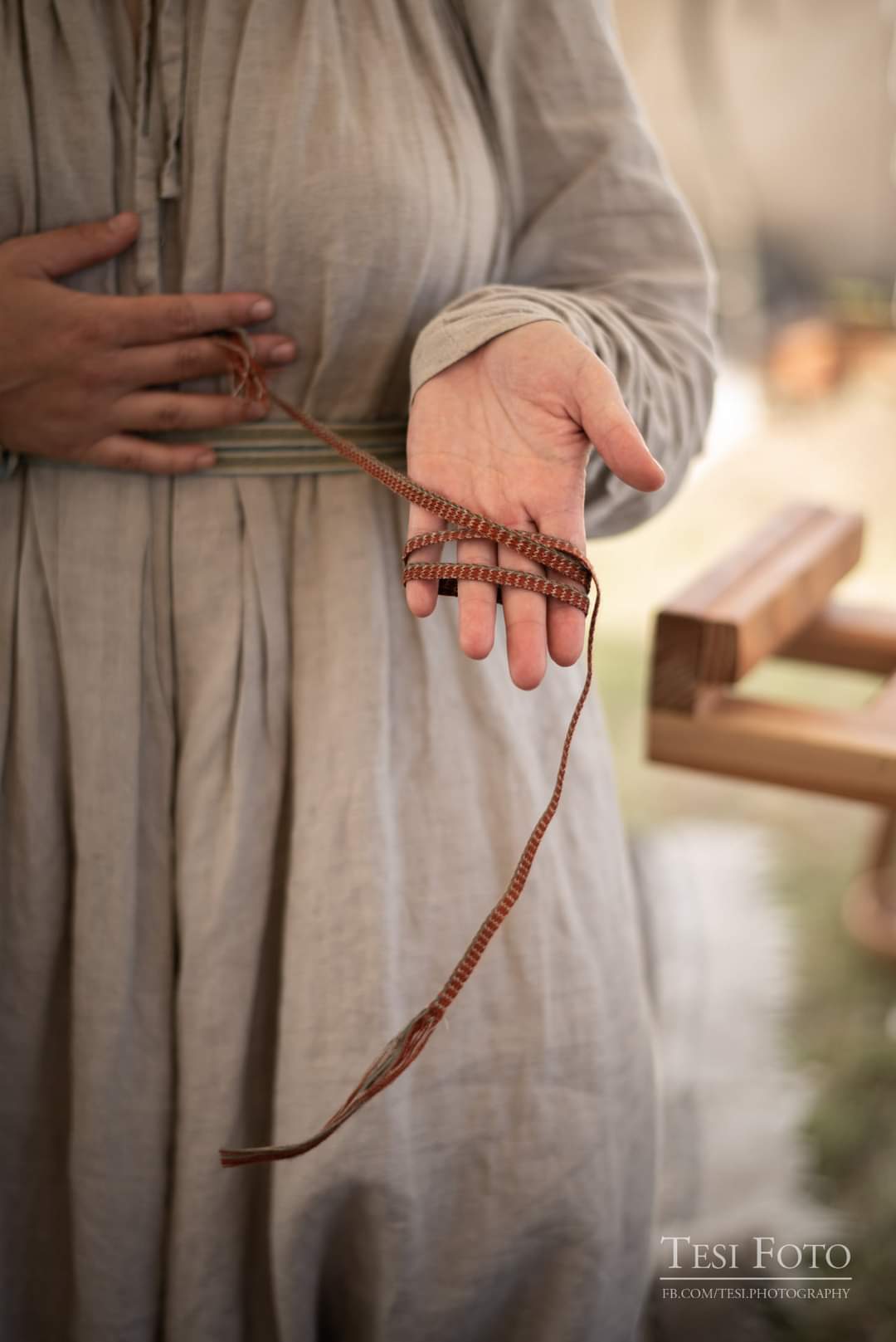When I first started re-enacting, I was immediately drawn to tablet woven bands. They’re such a pretty and impressive-looking detail to add to one’s kit, especially if you’re wanting to be fancy.
Sadly, like many cool things in historical costuming, it can be overdone. I personally know of several living historians who no longer use it in their clothing at all (except for perhaps very plain belts) on the basis that it is not well-enough represented in the archaeological record, except for in very rich graves. Such bands are often woven as brocades with silk and precious metal threads- well-known examples in VA re-enactment costume are some of the bands from Mammen (Denmark), Birka (Sweden) and the “Dublin dragons”.

I understand their concerns, but don’t go quite as far. I still use tablet woven bands in my impressions, albeit more sparingly than perhaps I used to. I would whinge that “there aren’t any English tablet weaving patterns from the VA”- fortunately, as is often the case, I was talking out of my backside.
In the 4B levels at Coppergate (dating to approximately 930-975AD), the beginnings of a beautiful, narrow silk band (1340) was found. The fragment consists of silk threads dyed with madder and madder+indigotin, as well as several silk threads that had no dye detected. The piece is 1.47m long and appears at first to be a tangled length of threads tied together. There were a few gaps in the pattern that it is believed were originally filled with linen or some other vegetable fibre. I interpreted this as red silk (madder) and purple (madder+indigotin) with the undyed silk and linen being yellowish gold and pale grey, respectively.

For my recreation, I was extremely grateful to Alicja of Hrafna Norse Crafts on Facebook for her article on the braid. She wrote up a pattern that I used and it can be found here. In her version of the braid, she used wool and chose a slightly different colourway, which I think is stunning!
When I said the original braid was narrow, it really is: 5mm in width! I am not a very good tablet weaver, but I did manage to keep it somewhere between 5 and 6mm throughout. It’s the teeniest braid I’ve ever woven and my first in silk!
It’s interesting to note that Walton (1989) suggests that fragment 1340 was made domestically in Anglo-Scandinavian York, due to the imported silk threads being made to go further with the inclusion of cheaper linen thread. Indeed, a bone weaving tablet was found nearby to 1340 in the 16-22 Coppergate site. It is believed to be contemporary to the braid, which indicates that braids were being produced in the area at the time.

When filling in the holes left in each tablet with a linen thread, a simple but effective pattern is created. It reminds me a little bit of Snartemo II, though that is far earlier. It’s also asymmetrical, with the undyed silk and madder+indigotin silk forming a corded border on one side of the band. To my taste, it’s an elegant pattern and one that I think I’ll enjoy wearing.
Due to the unfinished nature of fragment 1340, we don’t know what it was intended for. It could have been woven as a stand-alone piece like a fillet or indeed as a trim for a separate garment. However, it is fair to say that the original braid would have been expensive (since it was made of silk threads and contained dyes) and likely was intended for a richer sort. I chose to keep this first attempt as a fillet, mainly because I have a terrible habit of not measuring out enough warp. Perhaps in the future, I’ll have another go and weave enough for a neckline and cuffs of a gown.

References
Walton, P. (1989) Textiles, Cordage and Raw Fibre from 16–22 Coppergate. York: York Archaeological Trust. PDF.
Links



One thought on “A 10th Century Tablet Woven Band of Silk from York”